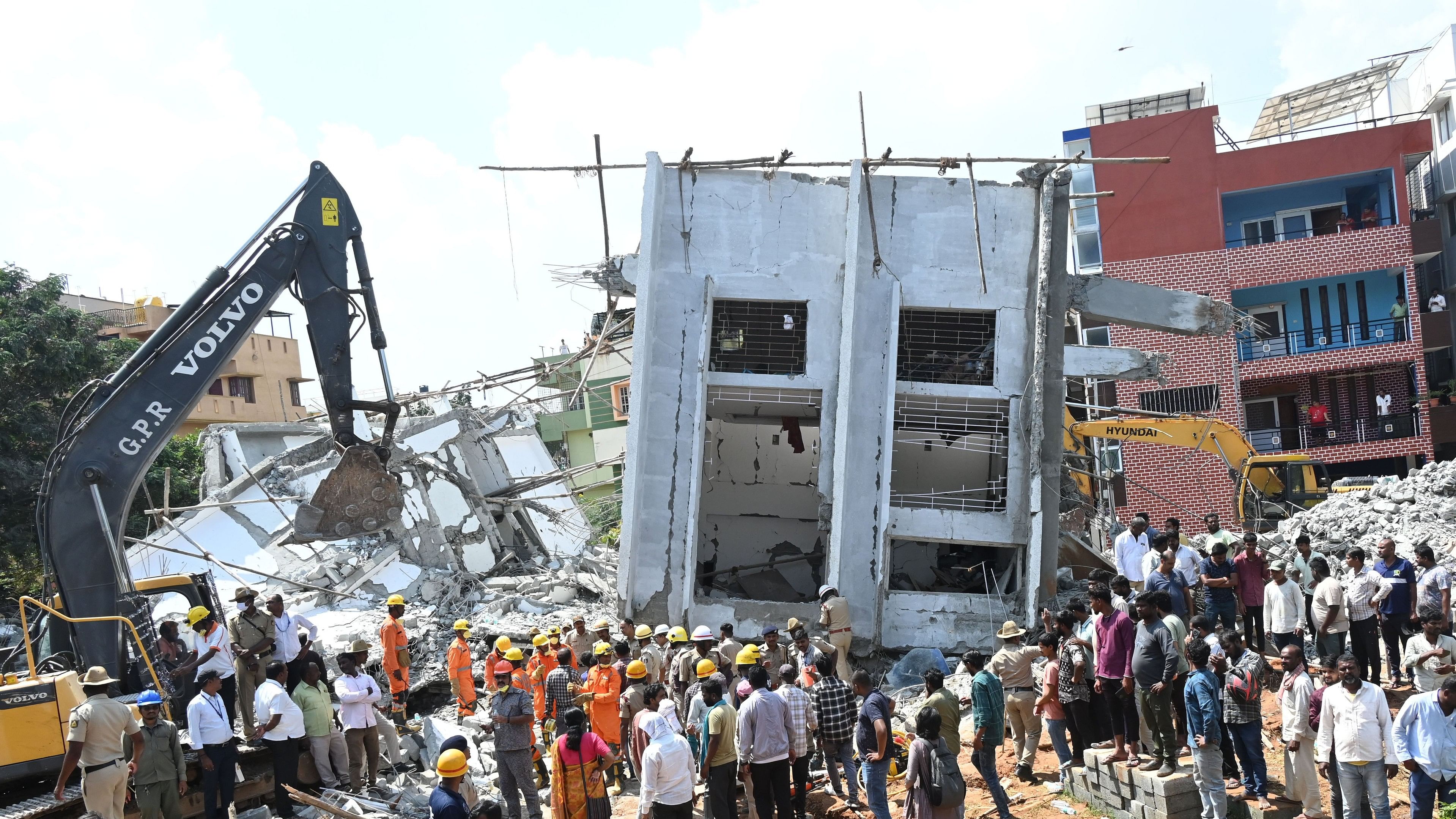
Credit: DH photo
On October 22, a six-storey building collapsed in Babusapalya, leaving 8 people dead. Between April and September this year, the BBMP had issued three notices, including an order to demolish the unauthorised structure. However, its construction continued despite these notices.
The incident has raised questions about the factors that make a building susceptible to collapsing. Metrolife spoke to structural engineers to comment on the topic.
In India, buildings must follow the National Building Code and Indian Standard Codes (IS Code), a series of standards established by the Bureau of Indian Standards (BIS).
Structural engineer Nabeel Moosa says soil investigation, a proper foundation design, accurate load calculations, identifying seismic zones and wind loads, and complying with IS Code and local building regulations are important while constructing a building.
Prashanth Nandiprasad, architect and designer with a design firm in Kumara Park West, points out that “most often a lack of adequate knowledge of sub-soil conditions and improper structural design cause buildings to collapse”. The city has a mix of sub-soil conditions. “Bengaluru has plots filled with garbage, construction debris, soil that is waterlogged, silty, or clayey, and disintegrating rocky soil and sheetrock soil,” he explains.
Not using the correct concrete mix, dubious construction material, and lack or inadequate curing of the structure, are other dangerous practices that can cause such incidents. “Eventual load the foundation needs to carry, type of loads (such as residential/commercial/vehicular/industrial), interior and exterior wall locations, column positions, height requirements (which are dependent on the width of the adjacent road and the floor area ratio), the footprint area the building is permitted to cover on the ground, and the construction setbacks should all be factored in,” adds Nandiprasad.
Kishore Gowda, another structural engineer, points out that “often contractors on such projects are not qualified”, some are not even aware of the grade of concrete to be used in different projects. “Site survey including identifying soil type, understanding what the adjacent buildings are and their foundation system are essential when constructing such buildings,” he says.
If the plan is for a G+1 (ground floor plus first floor) residential building, but more floors are added, its columns and foundation will not be able to bear the load. “It is essential to include informed contractors, architects, structural engineers, and geotechnical engineers in all projects,” he adds.
Commenting on the recent building collapse, Gowda points out that it overturned towards the road, which often happens “when the foundation is not designed efficiently and if the building is not given proper setback”. Setback is the distance between the nearest point of a structure and the property line.
Importance of proportions
There are several ratios to be considered when constructing a building, says Moosa. The water-cement ratio should typically be between 0.4 and 0.6 for optimal concrete strength, the reinforcement ratio must follow minimum and maximum steel percentages in structural elements as per IS 456 (published by BIS), and the slenderness ratio (quotient between the height and the width of columns) must be in check, he adds.
Using an incorrect ratio of materials like cement, sand, aggregate, and water can weaken the concrete’s strength. “Excess water in the concrete mix will reduce its strength and durability, insufficient cement can lead to a weak binding of materials, and using substandard or contaminated materials compromises structural integrity,” explains Moosa.